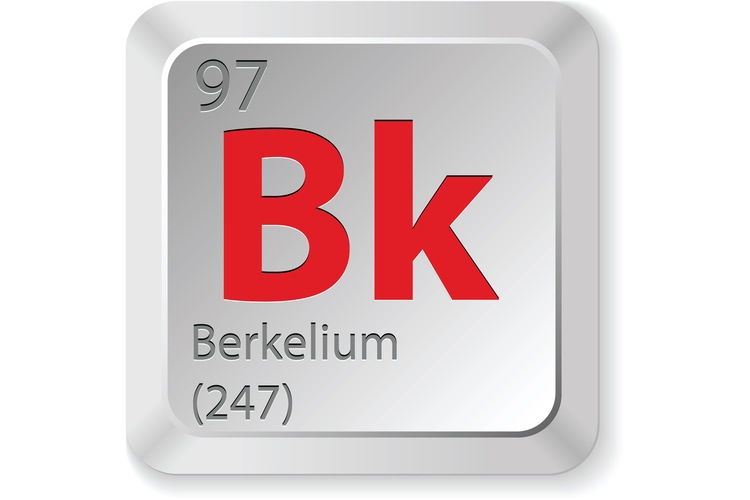Facts About Berkelium

Atomic Number: 97 Atomic Symbol: Bk Atomic Weight: 247 Melting Point: 1,922 F (1,050 C) Boiling Point: Unknown
Word Origin: Berkelium was named for the city of its origin, Berkeley, California.
Discovery: Berkelium was first produced at the University of California, Berkeley, in 1949 by Stanley G. Thompson, Glenn T. Seaborg, Kenneth Street Jr. and Albert Ghiorso. Initial investigations were limited to tracer experiments (ion exchange and co-precipitation) but in 1952 experiments were initiated to provide macro amounts of berkelium.
Properties of berkelium
Berkelium is the eighth member of the actinide transition series. As a metal, it has a silvery appearance that rapidly oxidizes in air or oxygen at elevated temperatures, forming an oxide. It is easily soluble in dilute mineral acids. The metal exhibits two crystal forms: a double hexagonal closest packed and a face-centered cubic. [See Periodic Table of the Elements]
Berkelium oxidation states 0, III, and IV are known to exist, and some evidence has been offered for the existence of II. There is, however, only speculation about the possible existence of V ions.
As with other actinide elements, berkelium tends to accumulate in the skeletal system.
Sources of berkelium
Berkelium is artificially produced, and has only been produced in relatively small amounts. It can be made through bombarding 241Am, an isotope of americium, with alpha particles using a cyclotron. This yields 243Bk and two free neurons.
Numerous alloys and compounds of berkelium have been prepared and studied.
Uses of berkelium
Because it is artificially produced and only small amounts exist, berkelium’s primary use is in basic scientific research. It has proven quite useful in that regard.
Due to its relatively long half-life and microgram quantity availability, 249Bk is used extensively as a target to synthesize heavier elements by charged particle bombardment.
As the first member of the second half of the actinide series, its study can enable a more accurate understanding of the behavior of heavier elements, which can be difficult to study because of scarcity, radioactivity, and more.
Isotopesof berkelium
There are 14 known isotopes of berkelium, ranging from mass number 238 to 251. Berkelium’s most stable isotope is 247Bk, which has a half-life of about 1,389 years. Through alpha decay, it decays to 243Am.
(Sources: Los Alamos National Laboratory, Jefferson Lab)
Sign up for the Live Science daily newsletter now
Get the world’s most fascinating discoveries delivered straight to your inbox.











